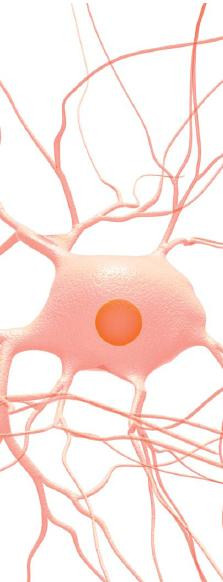Mental Health & Neurology
Addiction & Risky Behaviors
Mental Disorders, Anxiety & Depression
Brain Mechanisms & Psychology
Alcohol & Drugs
Ph.D
France
2010.09.30
Role of cortical parvalbumin interneurons in fear behavior
One of the major obstacles to an efficient treatment of addiction is it relapsing nature. Indeed, 90% of drug abusers relapse after variable periods of abstinence. Whereas the neuronal structures implicated in relapse of drug-seeking behavior have been identified, the underlying neuronal microcircuits are still largely unknown. In this context, my project sought to identify and study the neuronal components selectively implicated in the relapse of drug-seeking behavior using animal paradigms that adequately model symptoms of addiction behavior in humans.
The Wiring of fear

Studying the neural networks involved in relapse
Julien COURTIN, AXA PhD Fellow
Victor Segalen-Bordeaux 2 University
Although the brain structures involved in addiction are better known today, there still remain a number of grey areas. The mechanisms of relapse, in particular, remain a mystery for the most part. Julien Cortin, a PhD student in the “Pathophysiology of addiction” research team led by Pier Vincenzo Piazza at the Magendie Neurocentre in Bordeaux, seeks to uncover some of the mystery by implanting electrodes in very specific parts of the brains of rats “on drugs”.
The young scientist recently began his doctoral research under the direction of researcher Cyril Herry, with whom he learned this technique by studying the recurrence of fear in mice. Now, he seeks to observe the reorganisation of neural circuits during relapse of addictive behaviour. In order to do so, Julien Courtin has to measure the electrophysiological activity of individual neurons in three different structures of the brain: the nucleus accumbens, amygdala, and prefrontal cortex, which together form part of the “reward circuitry”. The challenge lies in that each of these structures contains millions of neurons! To reach his target, he will have to examine the neural circuits involved one by one. He will also have to perform the different recordings simultaneously in freely moving rats. This is no small feat.
Julien Courtin is conducting his experiments on rats that have been made addicted to cocaine using a highly controlled procedure. The rats can voluntarily intravenously self-inject the drug by inserting their nose into a hole called a “nose poke”. After three years of experiments, the rats have been divided into two groups. Certain rats keep their drug use under control. These rats are “non-addicts”. However, 17% of the rats – which is the same percentage found in humans – lose control and become addicted. “The animal’s perseverance in seeking out the drug allows us to evaluate their degree of dependence. At that point we can determine when this pathological behaviour occurs and then measure it by correlating it with neural activity”, explained Julien Courtin.
Furthermore, 90% of addicted rats that find themselves in the presence of the same environmental stimuli associated with the drug use, following a period of abstinence, have a relapse. Julien Courtin’s interest lies in this specific phase, since this phenomenon is identical in humans. “Ultimately, the idea is to investigate this phase and to identify the neurons that drive the animal to take the drug again. These neurons could be targeted by medication used to prevent relapse, since nothing like that currently exists.”
To add or modify information on this page, please contact us at the following address: community.research@axa.com

Julien
COURTIN
Institution
Université Victor Segalen Bordeaux 2
Country
France
Nationality
French
Related articles
Mental Health & Neurology
Pandemics & Infectious Diseases
Women's Health
Covid-19
Mental Disorders, Anxiety & Depression
Pregnancy & Maternal Health
Neurodevelopmental Disorders
AXA Award
Spain
2020.08.31
The Effects of the COVID-19 Pandemic on the Mental Health of Mothers and Newborns
Early results are expected in less than 12 months and will help bridge a critical gap in research. Indeed, “in... Read more

Maria
FORASTER

